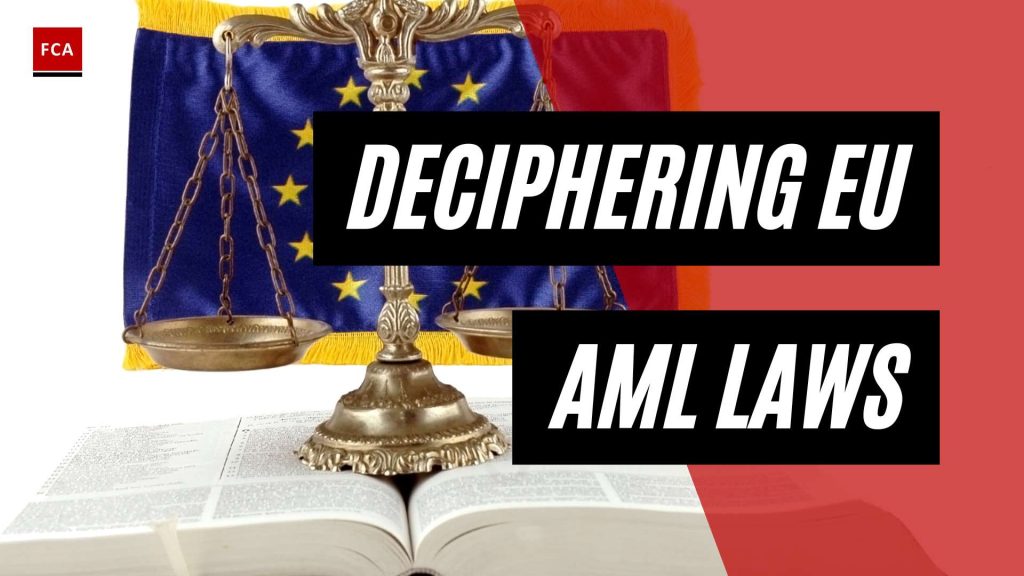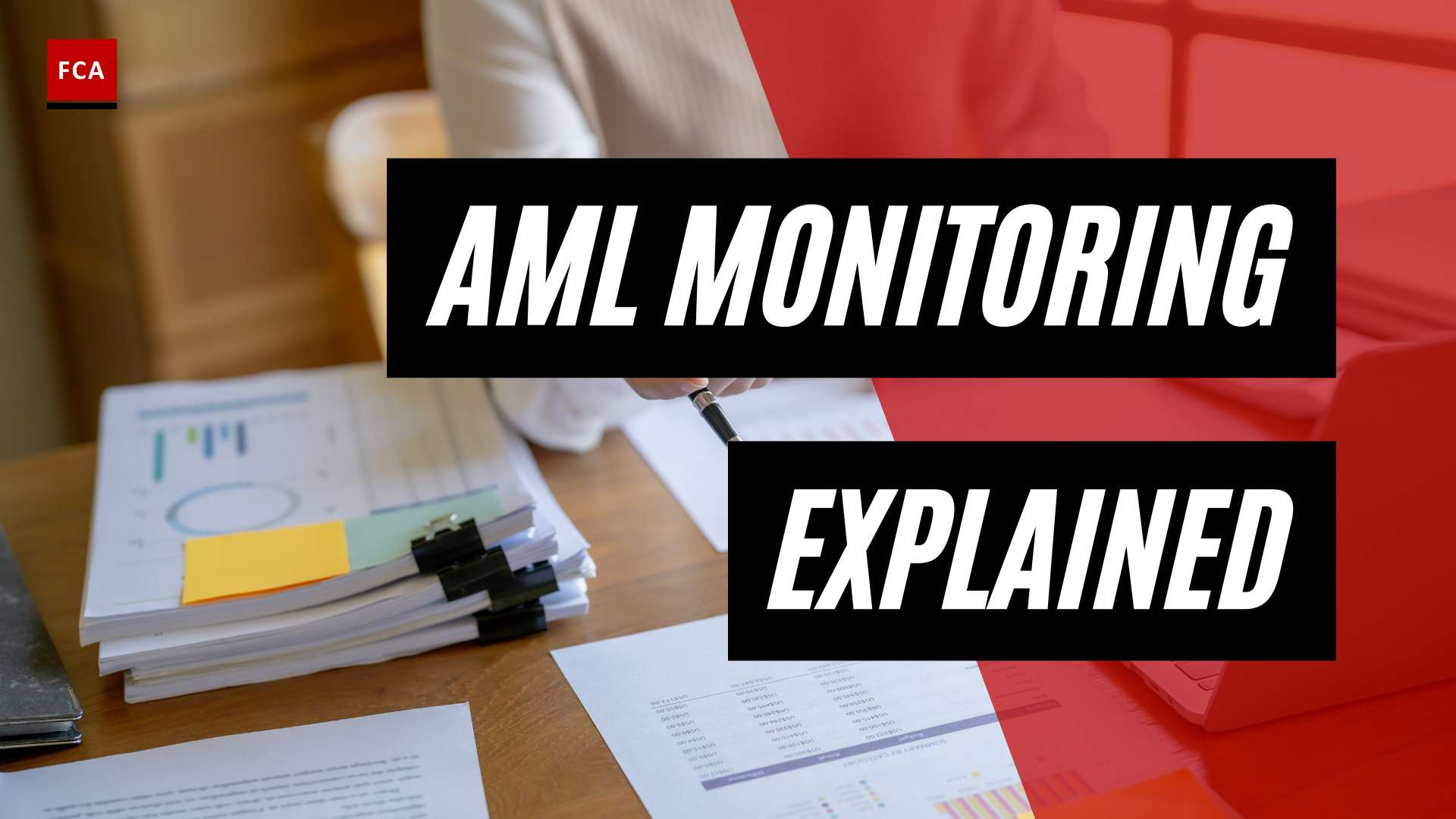Overview of EU AML Directives
To combat the rising threat of money laundering and terrorist financing, the European Union (EU) has implemented a robust framework of Anti-Money Laundering (AML) directives. These directives outline the legal requirements and obligations for entities operating within the EU to prevent and detect financial crimes. Understanding the evolution and key provisions of EU AML directives is essential for professionals working in compliance, risk management, and anti-money laundering.
Introduction to EU AML Laws
The journey of EU AML legislation began in 1990 when the European Union adopted its first AML directive to prevent the misuse of the financial system for money laundering purposes. This initial directive focused on the application of customer due diligence measures by obliged entities. Since then, the EU has continuously updated and strengthened its AML directives to keep pace with evolving financial crime threats and international standards.
Evolution of EU AML Directives
Over the years, the EU has taken significant steps to enhance its AML regulatory framework. The first Anti-Money Laundering Directive was adopted in 1991, aiming to combat the illicit movement of money within the internal market. This directive introduced measures for preventing money laundering and identifying customers engaged in financial transactions exceeding certain thresholds.
Subsequent EU AML directives have built upon this foundation, introducing stricter requirements and expanding the scope of regulated entities. The most recent major revision was the 5th Anti-Money Laundering Directive (AMLD) enacted in July 2018. This directive brought significant changes, including enhanced customer due diligence measures, beneficial ownership transparency, and increased reporting obligations (Pideeco).
To further strengthen the EU’s AML framework, the 6th Anti-Money Laundering Directive (6th AMLD) was adopted in 2018. This directive introduced measures to improve access to beneficial ownership information, enhance due diligence requirements, and strengthen supervision and enforcement measures across the EU (Pideeco).
Looking ahead, the EU is actively working on the 7th Anti-Money Laundering Directive (7th AMLD), proposed in July 2021. This directive aims to address emerging challenges and close regulatory gaps, particularly in response to the rise of cryptocurrencies and evolving financial crime threats (Pideeco). By continually updating and reinforcing its AML directives, the EU strives to stay at the forefront of the global fight against money laundering and terrorist financing.
Understanding the evolution and provisions of EU AML directives is crucial for entities operating within the EU. Compliance with these directives is essential to mitigate the risk of financial crimes, protect the integrity of the financial system, and contribute to a safe and secure business environment. For more information on the specific requirements and updates in EU AML directives, refer to our articles on EU AML legislation and EU AML framework.
Key Provisions of EU AML Directives
In the fight against money laundering and terrorist financing, the European Union (EU) has implemented a comprehensive framework of AML (Anti-Money Laundering) directives. These directives outline key provisions that organizations and financial institutions must adhere to in order to ensure compliance. This section will explore three important provisions: customer due diligence measures, beneficial ownership transparency, and enhanced reporting obligations.
Customer Due Diligence Measures
Customer due diligence (CDD) is a fundamental aspect of AML compliance. It involves the process of verifying the identity of customers, understanding the nature of their business relationships, and assessing the potential risks associated with those relationships. The first EU AML Directive, adopted in 1990, introduced the requirement for obliged entities to apply CDD measures.
Under EU AML directives, organizations are obligated to gather and verify information about their customers, including their identity, address, and the purpose of the business relationship. This information should be obtained from reliable and independent sources. By conducting thorough due diligence, organizations can identify and mitigate the risks of potential money laundering or terrorist financing activities.
Beneficial Ownership Transparency
Beneficial ownership transparency is another key provision of EU AML directives. It aims to enhance transparency in corporate structures by identifying the individuals who ultimately own or control a legal entity. Ensuring transparency in beneficial ownership helps prevent the misuse of legal entities for illicit purposes, such as money laundering or tax evasion.
EU AML directives require organizations to obtain accurate and up-to-date information about their beneficial owners. This includes gathering details such as the name, date of birth, nationality, and the extent of beneficial ownership. By identifying the individuals behind legal entities, authorities can trace the flow of funds and identify potential risks.
To facilitate beneficial ownership transparency, some EU member states have established central registers or databases where beneficial ownership information is stored and accessible to competent authorities. This accessibility enables law enforcement agencies and financial intelligence units to effectively investigate and prevent financial crimes.
Enhanced Reporting Obligations
Reporting suspicious activities and transactions is a crucial aspect of AML compliance. EU AML directives impose enhanced reporting obligations on organizations, requiring them to report any suspicious activities or transactions to the relevant authorities. This includes transactions that are unusual, inconsistent with the customer’s profile, or potentially related to money laundering or terrorist financing.
The reporting obligations under EU AML directives extend beyond suspicious activities. Organizations are also required to report customer identification data and other relevant information to the financial intelligence units and other competent authorities. By sharing this information, authorities can effectively analyze and investigate potential financial crimes.
Non-compliance with the reporting obligations can result in severe penalties. For example, under the 5th Anti-Money Laundering Directive (5AMLD), which regulates virtual asset service providers (VASPs), failure to comply with reporting requirements can lead to fines of up to €5 million or 10% of annual turnover.
By implementing robust customer due diligence measures, ensuring beneficial ownership transparency, and fulfilling enhanced reporting obligations, organizations can contribute to the prevention of money laundering and terrorist financing activities. Compliance with these key provisions of EU AML directives is essential in building a strong AML framework in the European Union.
EU AML Directives and Virtual Assets
As the world of finance evolves, so does the need to regulate emerging technologies and digital assets. The European Union (EU) has taken significant steps to address the risks associated with virtual assets within their Anti-Money Laundering (AML) framework. Let’s explore three key aspects of EU AML directives concerning virtual assets.
Regulation on Traceability of Transfers of Funds
To ensure the traceability of crypto-asset transfers and user authentication, the EU has introduced the Regulation on the Traceability of Transfers of Funds (TFR). This regulation aligns with the standards set by the Financial Action Task Force (FATF) and is set to take effect from December 2024. The TFR aims to enhance transparency in virtual asset transactions and strengthen AML measures within the EU.
5th Anti-Money Laundering Directive and Virtual Asset Service Providers
The 5th Anti-Money Laundering Directive (5AMLD) of the EU places specific obligations on virtual asset service providers (VASPs) to combat money laundering and terrorist financing. Under the 5AMLD, VASPs are required to conduct Know Your Customer (KYC) checks and verify the identity of their customers (KyrosAML). Non-compliance with these obligations can lead to severe penalties, including fines of up to €5 million or 10% of annual turnover.
Furthermore, the 5AMLD mandates that VASPs report suspicious activities, transactions, and customer identification data to the relevant authorities. This reporting requirement is essential for strengthening the AML efforts and safeguarding the financial system from illicit activities (KyrosAML).
European Union Travel Rule
The European Union Travel Rule is another crucial aspect of the EU AML directives concerning virtual assets. This rule requires VASPs to share customer information with other VASPs for all transactions above €1,000. By sharing this information, authorities can better monitor and detect potential money laundering and terrorist financing activities. Failure to comply with the European Union Travel Rule can result in significant penalties, including fines of up to €5 million or 10% of annual turnover for non-compliant VASPs (KyrosAML).
The inclusion of these provisions within the EU AML framework demonstrates the commitment to addressing the risks associated with virtual assets. By regulating VASPs and implementing robust AML measures, the EU aims to ensure the integrity of the financial system while preventing illicit activities.
To stay compliant with EU AML laws, VASPs must understand and adhere to these directives, including the Regulation on Traceability of Transfers of Funds, the 5th Anti-Money Laundering Directive, and the European Union Travel Rule. By doing so, VASPs can contribute to a safer and more secure virtual asset ecosystem within the European Union.
Recent Developments in EU AML Framework
The European Union (EU) has been actively refining its anti-money laundering (AML) framework to combat financial crimes effectively. Let’s explore some of the recent developments in the EU AML framework, including the 6th Anti-Money Laundering Directive (6AMLD), the proposal for the 7th Anti-Money Laundering Directive, and the establishment of the Anti-Money Laundering Authority (AMLA).
6th Anti-Money Laundering Directive
The 6th Anti-Money Laundering Directive (6AMLD), which came into effect on June 3, 2021, represents a significant milestone in the EU’s fight against money laundering and terrorist financing. This directive harmonizes regulatory details, clarifies rules, expands the list of predicate offenses for money laundering to include cybercrime and environmental crime, and introduces penalties for legal persons (organizations) involved in money laundering offenses.
Key highlights of the 6AMLD include:
- Expanding the definition of predicate offenses against money laundering, bringing cybercrime and environmental crime within the scope of AML regulation.
- Defining initiators, facilitators, and inciters of crimes as accomplices, including “aiding and abetting” and self-laundering as criminal acts (London Stock Exchange Group).
- Introducing criminal liability for legal persons (organizations) involved in money laundering offenses.
- Imposing tougher punishment for money laundering crimes, with a minimum sentence of 4 years of imprisonment.
Proposal for 7th Anti-Money Laundering Directive
Building on the success of the 6AMLD, the EU has proposed the 7th Anti-Money Laundering Directive to further strengthen its AML framework. The details of this directive are still under discussion and subject to approval. Once implemented, the 7AMLD is expected to enhance the EU’s ability to detect and prevent money laundering and terrorist financing activities.
While specific provisions of the 7AMLD are not yet finalized, the EU is likely to focus on emerging risks, technology-enabled financial crimes, and improving cooperation between supervisory authorities across member states.
Establishment of the Anti-Money Laundering Authority (AMLA)
To bolster the EU’s AML efforts, the Council and the Parliament of the European Union reached a provisional agreement on February 14, 2024, to create the Anti-Money Laundering Authority (AMLA). This new authority is a central element of the anti-money laundering package designed to protect EU citizens and the EU’s financial system against money laundering and terrorist financing (European Council Press Release).
Key features of the AMLA include:
- Direct and indirect supervisory powers over high-risk obliged entities in the financial sector, including crypto asset service providers.
- Collaboration with national supervisors to ensure obliged entities’ compliance with AML and countering the financing of terrorism (AML/CFT) obligations in the financial sector, as well as providing support to non-financial sectors.
- Authority to directly supervise certain types of credit and financial institutions, including crypto asset service providers, considered high-risk or operating across borders.
- Power to impose pecuniary sanctions on selected obliged entities in the event of serious, systematic, or repeated breaches of AML/CFT requirements (European Council Press Release).
- The decision on the location of the AMLA’s seat is still under discussion separately.
These recent developments in the EU AML framework reflect the ongoing commitment to combat money laundering, terrorist financing, and other financial crimes. The implementation of the 6AMLD, the proposal for the 7AMLD, and the establishment of the AMLA demonstrate the EU’s determination to strengthen the regulatory landscape and protect the integrity of the European financial system.
Enforcement and Penalties under EU AML Laws
To ensure compliance with European Union (EU) AML laws, entities must be aware of the enforcement mechanisms and potential penalties for non-compliance. The EU has established strict measures to combat money laundering and protect the integrity of the financial system.
Criminal Liability for Money Laundering Offences
Under EU AML laws, individuals and entities can face criminal liability for engaging in money laundering offenses. The severity of the penalties varies depending on the jurisdiction and the specific offense committed. The 6th Anti-Money Laundering Directive (6AMLD) introduced harmonized rules across the EU, including minimum prison sentences for individuals convicted of money laundering. It is crucial for entities to understand their obligations and comply with anti-money laundering regulations to avoid criminal liability.
Pecuniary Sanctions for Non-Compliance
Non-compliance with EU AML laws can result in significant pecuniary sanctions. The penalties imposed vary based on the severity and nature of the non-compliance. For instance, the 5th Anti-Money Laundering Directive (5AMLD) introduced penalties for legal persons (organizations) involved in money laundering offenses. These penalties can amount to fines of up to €5 million or 10% of annual turnover, whichever is higher (KyrosAML). Entities must prioritize compliance to avoid financial repercussions.
Impact of Non-Compliance on Entities
Non-compliance with EU AML laws can have severe consequences for entities. In addition to criminal liability and pecuniary sanctions, non-compliant entities may suffer reputational damage and loss of customer trust. Such repercussions can significantly impact an entity’s business operations and growth. It is essential for entities to implement robust AML compliance programs, conduct regular risk assessments, and stay updated with the evolving regulatory landscape. By doing so, entities can mitigate the risks associated with non-compliance and safeguard their reputation and financial well-being.
Understanding the enforcement mechanisms and potential penalties under EU AML laws is crucial for entities operating within the European Union. By complying with the AML regulations, entities can contribute to the prevention of money laundering activities, protect the financial system’s integrity, and maintain the trust of their customers and stakeholders.
The Role of IMF in AML/CFT
The International Monetary Fund (IMF) plays a crucial role in the global efforts to combat money laundering and the financing of terrorism (AML/CFT). The IMF focuses on addressing these issues due to their economic effects that can threaten the integrity and stability of a country’s financial sector and external stability. These crimes have the potential to cause destabilizing effects such as hot money flows, banking crises, ineffective revenue collection, governance weaknesses, reputational risks, and loss of correspondent banking relationships (CBRs), impacting the global financial system (IMF).
IMF’s Focus on AML/CFT Issues
The IMF has been at the forefront of shaping AML/CFT policies globally for the past two decades. It provides policy advice on macro-critical AML/CFT issues during Article IV consultations and addresses AML/CFT issues relevant to the financial sector’s soundness and stability through Financial Sector Assessment Programs (FSAPs). Additionally, the IMF contributes to the design of financial integrity-related measures in Fund-supported programs. These efforts aim to ensure that countries have robust frameworks and systems in place to detect and prevent money laundering and the financing of terrorism (IMF).
IMF’s Contribution to Global AML/CFT Policies
The IMF’s contributions to global AML/CFT policies have been significant. Through its policy advice and technical assistance, the IMF assists member countries in implementing effective AML/CFT measures. The IMF’s work encompasses various aspects, including assessing countries’ legal frameworks, supervisory frameworks, and institutional arrangements related to AML/CFT. By promoting international cooperation and sharing best practices, the IMF helps strengthen the global AML/CFT framework and encourages countries to adopt and implement international standards (IMF).
IMF’s Engagement with Civil Society Organizations
Recognizing the importance of engaging with civil society organizations (CSOs), the IMF actively seeks input and perspectives from CSOs on AML/CFT and broader financial integrity issues. As part of the IMF’s AML/CFT Strategy review, a survey was conducted to gather insights from CSOs globally. The survey highlighted the need for increased focus on illicit financial flows, beneficial ownership transparency efforts, and AML/CFT weaknesses in advanced economies. It emphasized the importance of closer engagement between the IMF and national and global CSOs to enhance the effectiveness of AML/CFT measures.
The IMF’s work on AML/CFT is guided by its strategy, which is reviewed by the Executive Board of the IMF on a five-year policy review cycle. The 2023 Review of the AML/CFT Strategy, endorsed in November 2023, will guide the Fund’s AML/CFT work for the next five years. The strategy places an enhanced emphasis on the macroeconomic impacts of money laundering, financial crime, and terrorism financing (IMF).
The efforts of the IMF in addressing AML/CFT issues contribute to strengthening the global financial system by promoting transparency, integrity, and stability. By collaborating with member countries, international organizations, and civil society, the IMF plays a crucial role in shaping and implementing effective AML/CFT policies and frameworks worldwide.
Interconnection of Money Laundering, Terrorism Financing, and Proliferation of Weapons of Mass Destruction
Money laundering, terrorism financing, and the proliferation of weapons of mass destruction are interconnected issues that pose significant threats to the integrity and stability of the global financial system. Criminals exploit vulnerabilities in financial systems and the broader economy to engage in illicit activities, necessitating strong Anti-Money Laundering and Combating the Financing of Terrorism (AML/CFT) measures to counteract these crimes effectively.
Exploiting Vulnerabilities in Financial Systems
Money laundering involves the process of concealing the origins of illegally obtained funds, making them appear legitimate. This process typically involves three stages: placement, layering, and integration. Criminals exploit various vulnerabilities in financial systems to facilitate money laundering, including:
- Weak customer due diligence measures: Insufficient verification procedures and lax know-your-customer (KYC) requirements allow criminals to hide their identities and the illicit origins of their funds.
- Inadequate beneficial ownership transparency: Lack of transparency regarding the ultimate beneficial owners of legal entities and trusts allows criminals to hide their involvement in illicit activities.
- Insufficient reporting obligations: Incomplete or delayed reporting of suspicious transactions hinders the detection and prevention of money laundering activities.
Terrorism financing involves providing financial support to individuals or organizations involved in terrorist activities. Terrorist groups often rely on the financial system to move and store funds, exploiting vulnerabilities such as:
- Informal value transfer systems: Informal methods of transferring funds, such as hawala and other alternative remittance systems, can be used to finance terrorism due to their lack of transparency and limited regulatory oversight.
- Non-profit organizations: Charities and non-profit organizations can be misused for terrorism financing, as they may lack effective screening processes or fail to properly monitor the use of funds.
- Trade-based money laundering: Criminals may exploit the international trade system to disguise the movement of funds, often through over- or under-invoicing of goods or services.
The Need for Strong AML/CFT Measures
To combat the interconnection of money laundering, terrorism financing, and the proliferation of weapons of mass destruction, robust AML/CFT measures are essential. These measures aim to:
- Enhance customer due diligence: Implementing thorough KYC procedures helps identify and verify the identity of customers, ensuring transparency and accountability in financial transactions.
- Promote beneficial ownership transparency: Requiring entities to disclose their beneficial owners helps prevent the misuse of legal entities for illicit purposes and enables authorities to investigate suspicious activities effectively.
- Strengthen reporting obligations: Timely and accurate reporting of suspicious transactions enables financial institutions to collaborate with law enforcement agencies in identifying and preventing money laundering and terrorism financing activities.
The European Union has been at the forefront of developing and updating AML/CFT measures through its AML directives. The most recent significant revision, the 5th Anti-Money Laundering Directive (AMLD), expanded the scope of AML provisions to include virtual currency exchanges, tax-related services, and art traders. It also introduced measures to enhance beneficial ownership transparency and improve cooperation among financial intelligence units across Member States.
By addressing the vulnerabilities in financial systems and implementing strong AML/CFT measures, the international community can better protect the integrity of the financial system, counter terrorist financing, and prevent the proliferation of weapons of mass destruction. Through continued collaboration and enforcement, the fight against these interconnected crimes can be strengthened, contributing to the global efforts to combat financial crime.
Future Outlook and Challenges in EU AML Framework
As the fight against money laundering and financial crime continues, the European Union’s AML framework is constantly evolving to address emerging challenges and strengthen the existing regulations. In this section, we will explore the future outlook and challenges in the EU AML framework, including legislative overhaul and technological innovations, addressing emerging challenges in financial crime, and strengthening AML/CFT measures for the future.
Legislative Overhaul and Technological Innovations
To keep pace with the rapidly changing landscape of financial crime, the European Commission announced a legislative overhaul of the AML/CFT rules in July 2021. This new directive replaces the rules from the 6th Anti-Money Laundering Directive (6AMLD) and previous AML directives. The aim of this overhaul is to introduce comprehensive measures that address the challenges posed by technological innovations, such as virtual currencies and digital payment systems.
The legislative overhaul demonstrates the European Union’s commitment to staying ahead of money laundering threats and ensuring that the AML framework remains robust and effective in the digital age. By incorporating provisions that address emerging technologies and their potential misuse for money laundering purposes, the EU is taking proactive steps to safeguard the integrity of its financial system.
Addressing Emerging Challenges in Financial Crime
As criminals become more sophisticated in their money laundering techniques, it is crucial for the EU AML framework to adapt and address emerging challenges. One such challenge is the increasing use of virtual assets and cryptocurrencies for illicit purposes. The European Union’s 5th Anti-Money Laundering Directive (5AMLD) aims to tackle this issue by regulating virtual asset service providers (VASPs) and imposing strict AML/CFT obligations on them.
Furthermore, the European Union Travel Rule, which is part of the AML laws, requires VASPs to share customer information with other VASPs for transactions above a certain threshold. This measure enhances transparency and strengthens the traceability of funds in the virtual assets space.
To effectively address emerging challenges in financial crime, continuous monitoring and analysis of new trends and techniques employed by money launderers are essential. This allows policymakers and regulators to develop targeted measures that mitigate the risks posed by evolving money laundering methods.
Strengthening AML/CFT Measures for the Future
The future of the EU AML framework lies in the continuous strengthening of AML/CFT measures. This includes implementing effective risk-based approaches, enhancing collaboration between financial institutions and regulatory authorities, and promoting international cooperation.
Legislative changes should prioritize the adoption of robust customer due diligence measures, beneficial ownership transparency, and enhanced reporting obligations to ensure that financial institutions have a comprehensive understanding of their customers and can detect and prevent money laundering activities effectively.
Additionally, leveraging technology and data analytics can significantly enhance the effectiveness of AML/CFT efforts. The use of advanced technologies, such as artificial intelligence and machine learning, can help financial institutions identify suspicious transactions, detect patterns of illicit activity, and improve the efficiency of their compliance processes.
To achieve a strong AML/CFT framework for the future, it is crucial for policymakers, regulators, and industry stakeholders to collaborate closely, share information, and stay abreast of emerging trends and best practices. By working together, the European Union can continue to strengthen its AML/CFT measures and maintain the integrity of its financial system.
The future of the EU AML framework will be shaped by a combination of legislative changes, technological innovations, and collaborative efforts to address emerging challenges and strengthen the fight against money laundering and financial crime. By remaining proactive and adaptive, the European Union can stay ahead of the curve and ensure the effectiveness of its AML/CFT regime for years to come.









